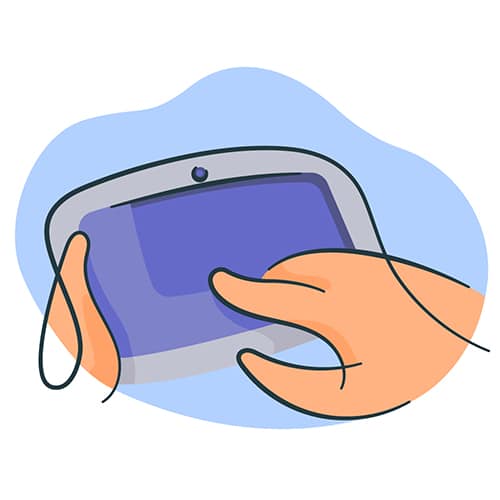Hazard Perception Practice Test Questions That Improve Your Driving
Learning to identify potential hazards is such an essential factor in mastering out while undertaking a driving course. It’s part of becoming a safe driver, and you should indeed devote much of your time to it.
The hazard perception tests help you to improve your driving experiences while on the road hence stopping you from incurring any accidents. The hazard perception practice test questions are thus a great deal to helping you master out all the driving rules, tricks to avoid accidents and generally improve your driving skills.
How A Hazard Perception Practice Test Can Stop You From Being An Accident Statistic
 What are the hazard perception tests?
What are the hazard perception tests?
The hazard perception tests are driving questions that come in two sections; Q and A parts. The tests are usually based on computer analysis prompting to provide solutions to unfolding cases within the given time. This thus means that you have to think and act faster based on the test given and the particular time frame. These driving test videos are meant to present to you real-life potential hazards that you’re likely to face while driving on your own. Providing quick solutions to these hazard perception tests gives you an idea of how you could handle some road challenges that come your way while driving. The tests are mainly meant to sharpen and improve your driving skills.
If you’re looking forward to passing your forthcoming hazard perception tests and you’re not sure of how to identify the hazards, then we have you covered. This article takes you through a complete guide on how you can successfully handle the hazard perception tests.
How do you identify hazards?
A hazard can be anything; an object, another car, a cyclist, animals, people crossing on the road any other object that will prompt you to change your driving speed, direction, or even stop the car. You may encounter these hazards anywhere in the course of driving, probably on the roundabouts, corners, and also at the junctions. For you to pass the hazard perception tests; therefore, you’ll need to stay alert and focused on spotting all the developing hazards. Developing hazards could be another car exiting the driveway, pedestrians crossing the road, children playing between parked cars or animals crossing the road, among other hazards. You need to spot these hazards sooner enough to avoid causing any collusions.
When You Take A Hazard Perception Test Practice, It Should Mirror The Real Thing
 When should you click on the hazard?
When should you click on the hazard?
Once you see any object that’s likely to develop into a hazard, you should click on it and also click for a second time if it continues to develop. You may also have the chance to click for the third time if you identified the hazard sooner enough. However, if the hazard doesn’t continue to develop after the first click, then you don’t need to click for a second or third time. These are basic rules that can earn you four or even 5 points in your tests. Following the rules also minimizes the chances of scoring 0 points or being accused of cheating in the tests.
What happens if you click too early for the developing hazard?
There’s a greater chance that you’ll earn 5 points for making your first click on the hazard. However, clicking too early on the hazard may earn you 0 points. For you to score the 0 points means that you clicked on the object at the 100th of a second even before the window could open, and that would be regarded as cheating hence giving you 0 points for the test. The second click can thus give you 5 points to safeguard your first click. At times it may be hard to score the5 points once you messed up your first click, but that would not worry you 3 points for just one hazard does not make you a failure. You could try scoring higher points in the other hazards. Making the third click after the first and second clicks have failed may not earn you higher points, but at least 1 or 2 points for just one hazard is not a total failure you can maximize your scoring chances in other developing hazards.
Why it’s essential to take the hazard perception practices
The hazard perception practices a great way of training you to be a safe driver in real life. The perception skills will give your ideas and tricks on how to identify potential hazards and how to react accordingly to avoid causing collisions or rather accidents. Building your perception skills also prepares you for the theory tests, which would make you fully ready to meet with all forms of obstacles on the roads. You’ll be exposed to all driving rules and skills, traffic lights, and the road codes that you need to master for a safe drive while on the highways.
Why You Can’t Afford To Miss The DVLA Hazard Perception Test Practice
 Based on the struggle that candidates go through while taking the hazard perception tests, you can’t afford the perception test practices. The hazard perception test practices are the only sure way to prepare for the official driving tests. You need to practice to master out the tricks and get strategies on how to react to the developing hazards. Practice makes perfect, and it’s from the regular training that you may be able to pass your test. The regular practices make it easy for you to identify potential hazards and know exactly when to make a move or react to the objects to avoid causing accidents.
Based on the struggle that candidates go through while taking the hazard perception tests, you can’t afford the perception test practices. The hazard perception test practices are the only sure way to prepare for the official driving tests. You need to practice to master out the tricks and get strategies on how to react to the developing hazards. Practice makes perfect, and it’s from the regular training that you may be able to pass your test. The regular practices make it easy for you to identify potential hazards and know exactly when to make a move or react to the objects to avoid causing accidents.
In conclusion, the hazard perception test isn’t difficult to pass if you follow through the proper driving guidance. It’s from these practices that you’ll be ready to take the official driving test. There’s, therefore, nothing to be worried about if you have regular hard practices on the free hazard perception test websites since you have all the ideas you may need to pursue the official tests. The practices reflect the real tests, and doing some regular practices of these tests seems like a revision while sitting on the official driving tests.
